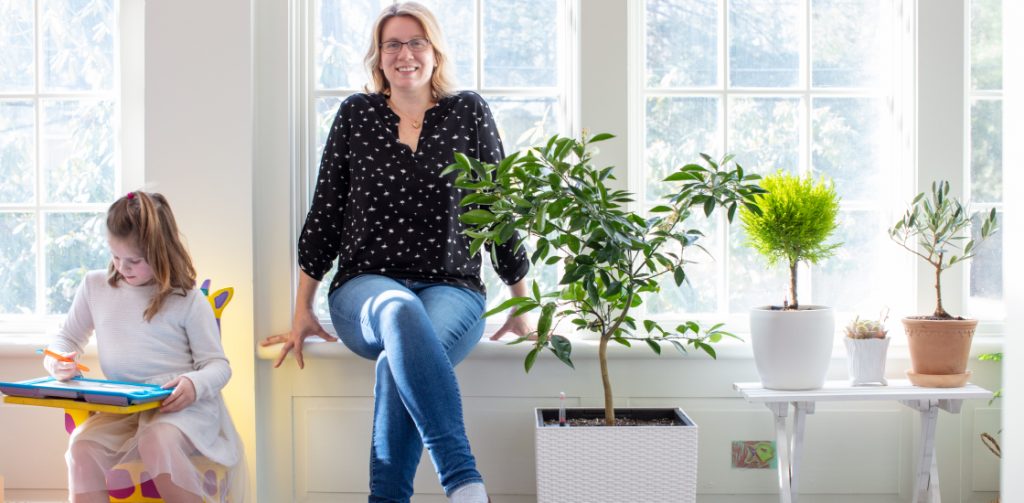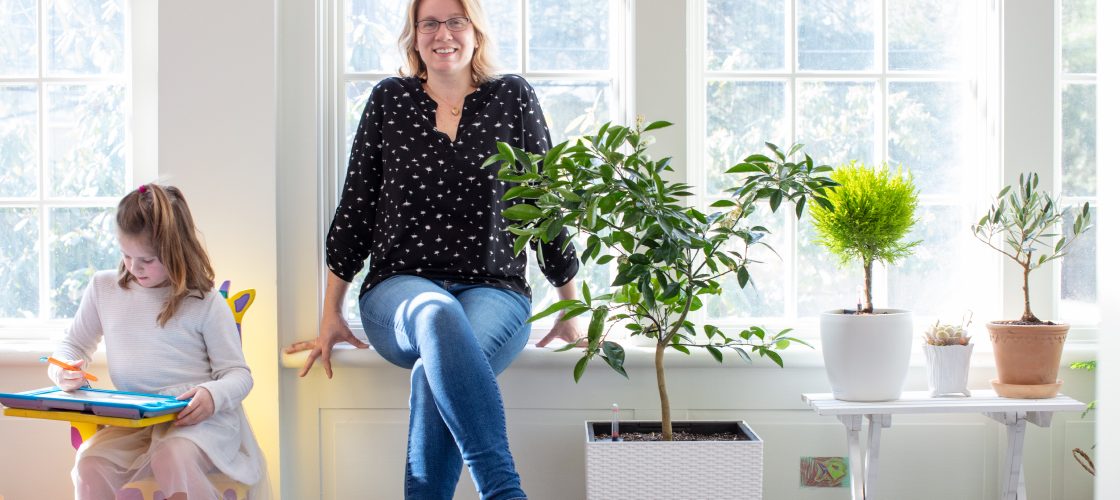Source: [Spectrum, Sarah Deweerdt | March 19, 2020]

Elise Robinson’s newest office mates are a ficus tree, its broad variegated leaves enjoying the light from a narrow window, and a pair of small succulents perched one above the other at the edges of bookshelves. And these are just a fraction of what Robinson has in her home in Wellesley, where an expansive sunroom — mullioned windows on three sides, skylights above — hosts a grove of citrus at one end (plus “the world’s smallest olive tree” on the windowsill) and a table with pots of everything from paperwhite narcissus bulbs to a Norfolk Island pine tree at the other.
This was Robinson’s childhood ambition — “to have a house full of trees.” The other was to understand how people make sense of the world, a question that has informed much of her autism research.
“Growing up, I was very interested in the way people think and the way they relate to numbers and numeric logic,” says Robinson, an institute member at the Broad and assistant professor of epidemiology at Harvard University. At the time, she did not know the technical term to describe this: causal inference. But even so, her work — like her habitat — still reflects “an adult version of who I was at 8.”
Robinson also brings the expansive gaze and imagination she exhibited early on to her pursuit of science. Whereas many autism researchers are experts in their own arenas — studying genes exclusively, for example, or deeply characterizing autistic people’s traits — Robinson is a geneticist with a deep understanding of the condition’s clinical presentation.
“Elise recognized both sides of the equation as being important,” says Mark Daly, Robinson’s postdoctoral advisor and director of the Institute for Molecular Medicine Finland at the University of Helsinki. “She has really managed, I think in ways that haven’t been done very effectively before, to bring expertise on both sides together.”
This ability led Robinson to explore the interplay between the different types of genetic variants that contribute to autism — and to lead a study that aims to bring African populations into autism research on a scale no one has attempted before. This study, with scientists across three continents, is “one of my favorite things about my job,” she says. “It was this beautiful blending of really nice, constructive, productive working relationships with people who are approaching it with different skills.”
Robinson is among the few autism researchers who could pull off this cross-disciplinary project. Over the course of her career, she has switched fields multiple times, ranging from anthropology to epidemiology and digging into genetics only when she was already well into her postdoctoral work. Her generous and calm work style, as well as her shrewd experimental designs, have made her a sought-after collaborator. Somer Bishop, one frequent collaborator, told Robinson she wanted to talk on the phone at least once a month. “I don’t care what we talk about,” says Bishop, associate professor of psychiatry at the University of California, San Francisco. “Every time I have a conversation with her, I feel like, ‘We can do this — we can figure this out together.’”

Causal relations:
Robinson grew up in Kensington, Maryland, a suburb of Washington, D.C. Her mother was an elementary school teacher and her father a lawyer. Her younger sister is also a lawyer, as is Robinson’s husband, Tom Byron. Robinson, too, has a way of choosing words carefully when she speaks that could be described as lawyerly — precise and persuasive.
As a child, though, her favorite subject was mathematics. When she entered college at Dartmouth University in Hanover, New Hampshire, in 2001, she assumed she would major in mathematics or science, but she struggled to succeed in the formal, lecture-based classes. “The things that made grade school and high school unpleasant for me just made college really, really difficult,” she says.

